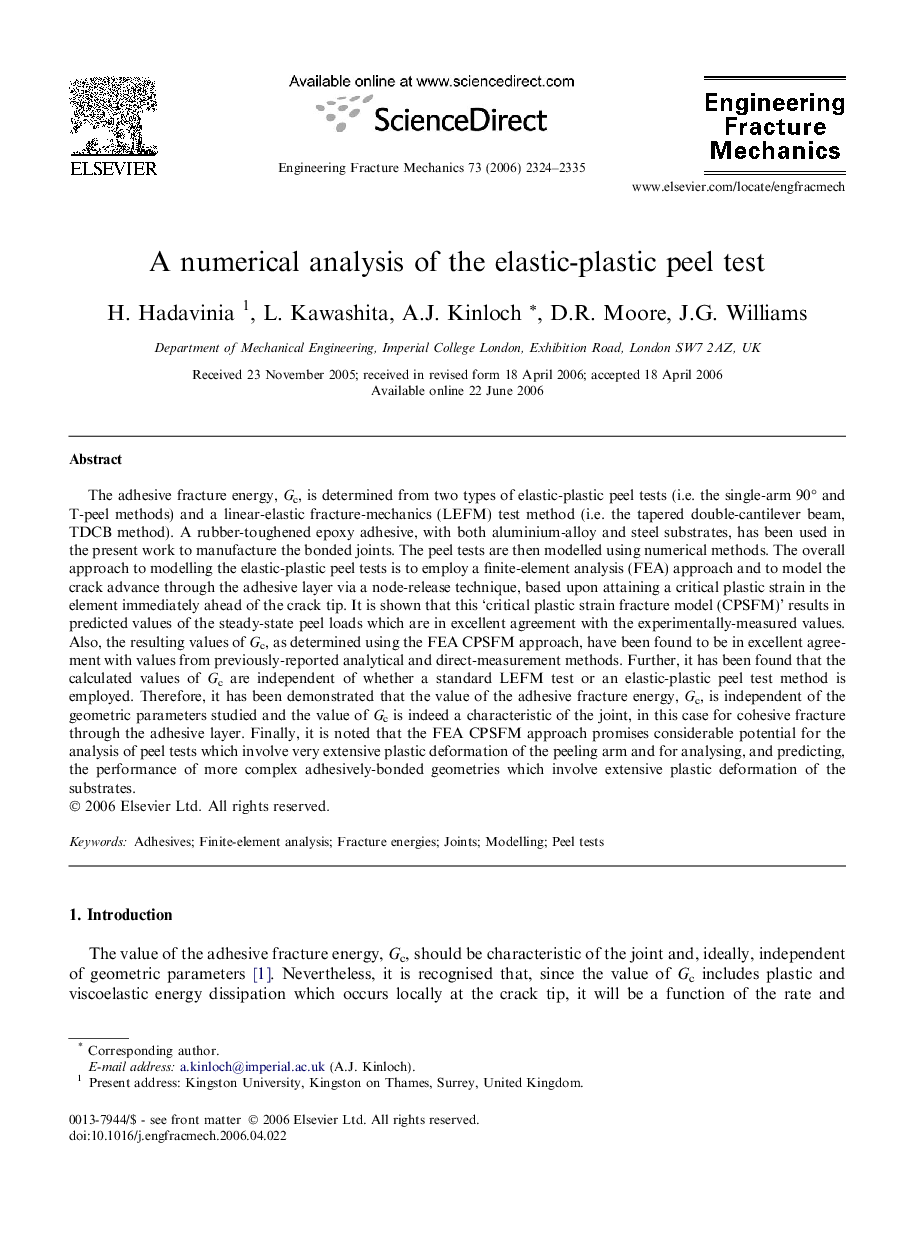| Article ID | Journal | Published Year | Pages | File Type |
|---|---|---|---|---|
| 768166 | Engineering Fracture Mechanics | 2006 | 12 Pages |
The adhesive fracture energy, Gc, is determined from two types of elastic-plastic peel tests (i.e. the single-arm 90° and T-peel methods) and a linear-elastic fracture-mechanics (LEFM) test method (i.e. the tapered double-cantilever beam, TDCB method). A rubber-toughened epoxy adhesive, with both aluminium-alloy and steel substrates, has been used in the present work to manufacture the bonded joints. The peel tests are then modelled using numerical methods. The overall approach to modelling the elastic-plastic peel tests is to employ a finite-element analysis (FEA) approach and to model the crack advance through the adhesive layer via a node-release technique, based upon attaining a critical plastic strain in the element immediately ahead of the crack tip. It is shown that this ‘critical plastic strain fracture model (CPSFM)’ results in predicted values of the steady-state peel loads which are in excellent agreement with the experimentally-measured values. Also, the resulting values of Gc, as determined using the FEA CPSFM approach, have been found to be in excellent agreement with values from previously-reported analytical and direct-measurement methods. Further, it has been found that the calculated values of Gc are independent of whether a standard LEFM test or an elastic-plastic peel test method is employed. Therefore, it has been demonstrated that the value of the adhesive fracture energy, Gc, is independent of the geometric parameters studied and the value of Gc is indeed a characteristic of the joint, in this case for cohesive fracture through the adhesive layer. Finally, it is noted that the FEA CPSFM approach promises considerable potential for the analysis of peel tests which involve very extensive plastic deformation of the peeling arm and for analysing, and predicting, the performance of more complex adhesively-bonded geometries which involve extensive plastic deformation of the substrates.
